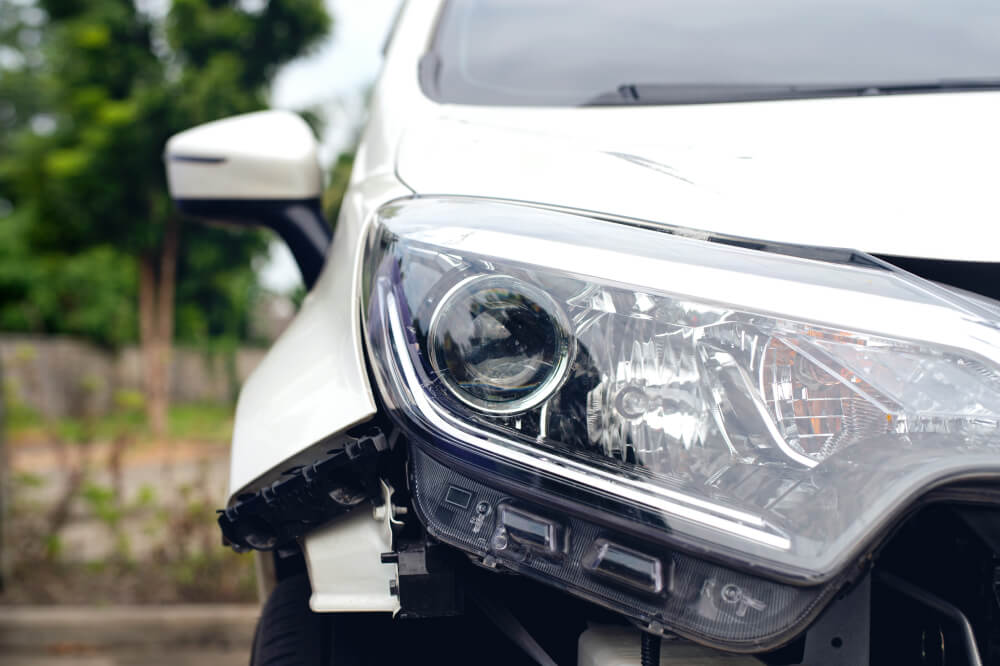
Accidents happen, every day. From simple fender-benders to serious crashes, there’s no shortage of collisions on our roads. Tune into your local traffic report and you’ll know this to be true. And, for every collision you hear about, there’s sure to be an insurance claim on the horizon, as the affected drivers turn to their
When cars collide and there are damages What type of car insurance coverage is needed? How to submit a car insurance claim Who decides if a vehicle is a total loss or if it can be fixed? So, your car is totalled. Now what? Get back on the road sooner with the right coverage
When cars collide and there are damages
Vehicles are expensive. They’re expensive to buy, expensive to maintain, and when involved in a collision, expensive to repair. Even when the
- What is a total loss? In a nutshell, a total loss means it will cost too much to repair a vehicle to its pre-collision condition. In other words, it makes better financial sense for the insurer to give you money towards a new (or new to you) vehicle – a total loss payout – rather than pay to fix it. The phrases ‘written-off’ and ‘totalled’ are often used interchangeably in this context as well.
Whether your vehicle is insured for collision-related damages – if it’s a total loss or not – will depend on the
What type of car insurance coverage is needed?
If you’re in an accident and there are damages to your car, basically one of two coverages will be key to your insurance claim: Collision and/or DCPD. The one that factors into your claim will largely depend on who is at fault for the crash.
- Collision coverage: If you’re found to be at fault for the accident – even partially – the insurance claim goes through your collision coverage, i. If you have it. Collision insurance is usually optional and not all drivers buy it. If you opted out of the coverage, you’ll have to foot the cost for repairs or replacement on your own.
- Direct Compensation Property Damage (DCPD): If you are not at fault for the collision, the claim goes through your policy’s DCPD coverage, where available. DCPD is required in Alberta, New Brunswick, NL, Nova Scotia, and PEI. In
Ontario, it’s optional . 1 In Alberta it’s generally required, but you might be able to opt out depending on your insurer. Something like DCPD is also available in Quebec, only it’s not called DCPD. Quebec insurers use the Direct Compensation Agreement to process the claim through the policy’s mandatory Civil Liability coverage. 2
How to submit a car insurance claim
No matter how minor, car accidents are stressful. And, navigating the insurance
To start, the best thing you can do is document as much as possible right away. Your memory for details is generally best nearest the time when the collision happened. The type of things you’ll want to make note of include:
- Date, time, and location of the collision
- The details of what led up to the accident. What did you do or not do? What did the other drivers involved do or not do?
- The driver’s licence and insurance information of each of the affected drivers
- Contact information for everyone at the scene including the drivers, passengers, witnesses, and police
- Damages to all the vehicles involved. Take pictures 3
Following this, you can make a claim online or over the phone, depending on your insurer. Both options are generally available 24/7. Once the process is underway, you’ll soon find out if the vehicle is a total loss or not.
Who decides if a vehicle is a total loss or if it can be fixed?
When you submit a claim and begin the claim process, who decides what happens next? The answer sometimes surprises drivers. The truth is, if you have the necessary coverage, it is the insurer who makes the call. The insurer’s decision to write-off your vehicle will be based on the dollars and cents of the answers to questions like these:
- Can the vehicle be repaired so it is safe to drive?
- How much will the repairs cost?
- How much was the vehicle worth before the accident?
- What is the car’s salvage value?
The information gleaned from these questions will determine whether or not your vehicle is considered fixable or a total loss.
So, your car is totalled. Now what?
Once it’s decided your vehicle isn’t repairable, your insurer will likely reimburse you for its value – the value before the accident happened. Your deductible may apply. How much you get will depend on things like:
- The vehicle’s year, make, and model
- Mileage
- Overall condition
- After-market features or upgrades
- Depreciation, if applicable
You might be asking yourself, “Wait, isn’t depreciation always applicable?”. Not necessarily. If your vehicle was brand new when you got it, you may have opted to buy what’s called a ‘
Get back on the road sooner with the right coverage
No one ever wants to be involved in a collision. But if it happens to you, having the right coverage to offset the costs of repairs or replacement is usually worth having. Totally.